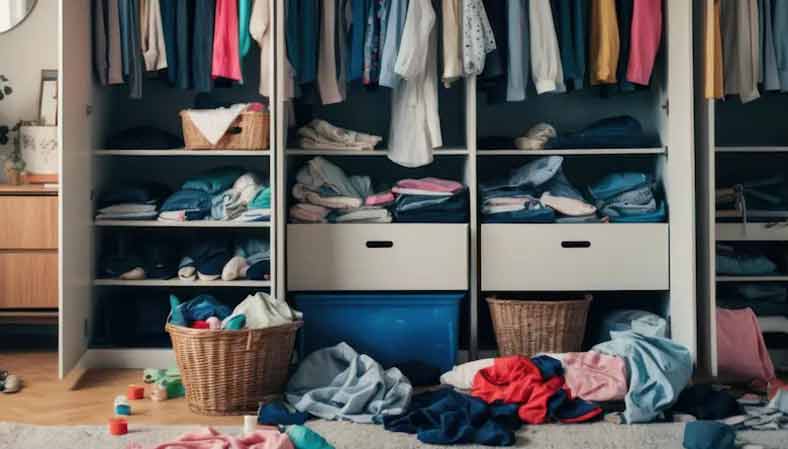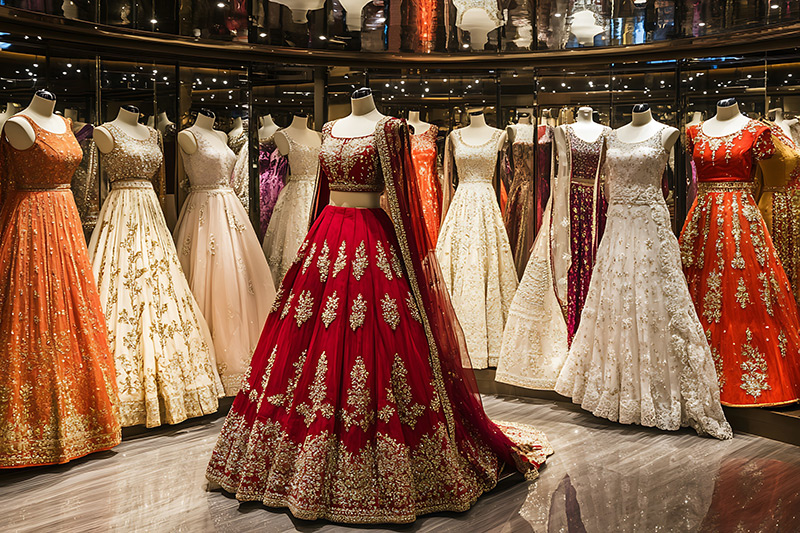As humans, we have a tendency to hoard, be it our clothes, utensils, home decor, or even gifts from long ago that have never been used. This stems from a deep-rooted belief in reusing and repurposing items and preserving heirlooms, sarees, even notebooks that hold sentimental value. Indians, in particular, with recent memories, and a long history, of poverty, tend to save things for a rainy day. And then there is a deep-rooted hand-me-down culture of clothes, books, furniture often passed down and around. Last, but not the least, is the e-commerce culture where we buy more out of want than need.
Needless to say, this often leads to clutter around the house, and an acute shortage of storage space.
According to Delhi-based architect Arjun Thapar, “The ideal amount of storage in a home depends on the size of the household, lifestyle, and available space. As a general rule of thumb, at least 10-15% of your total home area should be dedicated to storage. We always undermine the importance of extra storage rooms, lofts, basement options and focus on how many rooms an apartment has.”
He shares how in two of his current projects – an engine design expert, who has interesting engineering models to store and display, and a marathon runner who has lots of medals to display – storage is a prime need and he needs to put together a storage solution that can double up as a display unit.
Creating Storage
Whether it is a tight Manhattan or Hong Kong apartment or a relatively expansive New Delhi one, space is scarce. The effort nowadays is to use every inch of wall space. Sofas now come with built-in storage, beds with boxes or even multifunctional furniture such as sofa-cum-beds.
One of the most in-demand storage spaces in upwardly mobile Indian homes is the Walk-in closet. It appeals to urban homeowners, professionals, and design-conscious consumers who prioritise organisation. Even compact living spaces can benefit from modular wardrobe systems that optimise available space efficiently. Creating a walk-in closet can vary in cost based on size, materials, and customisation. IKEA, for example, which has walk-in closets with a range of accessories to suit different functional and aesthetic preferences.
According to Shailly Mandiwal, Country Home Furnishing Direction leader at IKEA India, “Walk-in closets are an aspirational storage solution in Indian homes, driven by the growing need for organised, clutter-free spaces. While traditionally more common in larger homes, modular walk-in solutions are now increasingly adaptable for urban apartments as well. At IKEA, we see a shift towards customisable, space-efficient storage solutions, where walk-in closets provide both functionality and aesthetics.”
She adds that a standard walk-in closet typically requires a minimum of 25-30 sq ft for a compact yet functional layout. However, the ideal space for a walk-in closet would be around 50-100 sq ft, depending on the level of customisation and storage needs.
For apartments where space is a constraint, walk-in closets can be replaced by modular wardrobe solutions with smart storage solutions like sliding doors, vertical stacking, and integrated lighting. The open wardrobe systems allow customers to optimise available space smartly, even within limited square footage.
Another storage solution, and a generational favourite, are almirahs. Earlier, almost every home used to have a Godrej almirah because of its customisable shelves, efficient space utilisation but, most importantly, a built-in locker. Most Godrej almirahs come with an internal locker for securing cash, jewellery, or important documents. According to Swapneel Nagarkar, executive vice president and business head at Interio, one of India’s leading furniture brands from the Godrej Enterprises Group, “The evolution of India’s storage solutions market reflects the profound transformation in our urban lifestyle and living spaces. What makes Interio almirahs the gold standard is our commitment towards combining security with functionality…. The built-in locker system continues in our product, solving Indian families’ security needs for safeguarding their valuables…. By incorporating modular design principles, we are offering customisation options that adapt to diverse spatial requirements and aesthetic preferences to suit any room.”
Cabinetry is another option, and takes on different avatars in different rooms. In the living room, it comes in the shape of chest media consoles, coffee tables with storage, and display cabinets for decor, books, and electronics. In the dining area, crockery cabinets, bar cabinets, and sideboards for dinnerware and glassware provide storage options. In the study or home office are bookshelves, filing cabinets, and modular storage for an organised workspace. In the bedroom, cabinets acquire the form of wardrobes, bedside cabinets, and dressers for personal storage. As entryway storage, it usually means a shoe cabinet with seating or a console table.
“Cabinetry is essential in-home storage, a perfect blend of functionality, aesthetics, and space optimization,” says Shipra Chanchal, brand manager at Jodhpur-based Orange Tree. “Well-designed cabinets not only help in organizing essentials but also contribute to the visual balance and flow of a space. At Orange Tree we believe that the right cabinetry can enhance the perceived volume of a room for instance, sleek, minimal cabinets create an open and airy feel, suitable for small spaces. At the same time, larger storage units can serve as statement pieces without overwhelming the space.”Features like shelf extensions, compact modular units, and hidden storage solutions help maximize small spaces, ensuring every corner is functional yet aesthetically pleasing.”
Overall, storage solutions need to have a minimal footprint, be custom-made for different shapes and sizes, and child friendly so kids can put away and pull out items on their own. Specialised storage solutions may be used for the kitchens, bathrooms, bedrooms, study areas for art supplies, paints, expensive brushes etc. Also, do not discount the use of so-called floating shelves – these are perfect for displaying decorative items without taking up floor space. One can also use staggered or corner shelves for a unique look.
Expectations from storage solutions are complex. “Convenient retrieval is key. An ageing population means that box beds are useful only for large items needed to be pulled out rarely,” points out Thapar. “It should be possible to access storage at a convenient height. Bending too low or putting something too high makes it redundant, if it can’t be retrieved conveniently in time.”
Finally, as they say, a well-organised storage space is the foundation of an organised life. Storage is the key to a clutter-free home and a clutter-free mind. The art of storage lies in finding a place for everything and keeping everything in its place.
| Storage Unit | Indicative Pricing (Rs) |
| Dali gold coffee table | 25,599 |
| Toshi study table | 30,399 |
| Andaman Inglis console table | 57,999 |
| Andaman Smith TV init | 67,999 |
| Neo Kyoto chest of drawers | 72,699 |
| Abacus sideboard | 74,699 |
| Dune chest of drawers | 92,999 |
| Buda drawer storage bed | 131,299 |
| Walk-in closet | 80,000 to 2.5 lakh |




